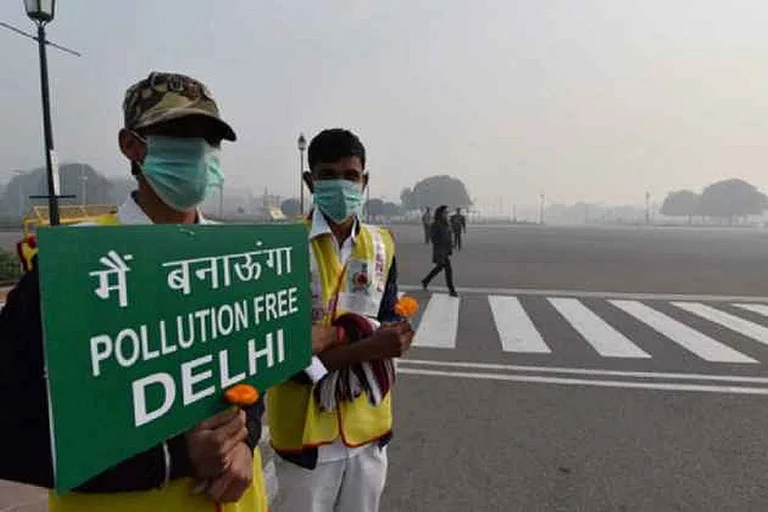Delhi AQI at 242 this morning remains in the “poor” category
Anand Vihar (370) and Akshardham (369) top the “very poor” list
Cloud seeding set to begin in 2–3 days to curb pollution
Supreme Court permits green crackers; winter action plan active
Delhi AQI Today: Poor Air Quality Amid Diwali Preparations
With low winds and clear skies, pollutants remain trapped, worsening the air quality in Delhi. This comes as Stage I of the Graded Response Action Plan is activated to address winter smog.
Delhi’s air quality index (AQI) hit 242 at 5:30 AM on October 17, 2025, placing the capital firmly in the “poor” bracket (201–300) according to the Central Pollution Control Board. The early-morning temperature was 18.2 °C, under clear skies and low winds that hamper the dispersion of pollutants. The persistent dip in air quality follows the launch of Stage I of the Graded Response Action Plan to tackle winter smog.
Delhi AQI: Area-Wise Details
Several localities recorded “very poor” AQI levels (301–400), signaling unhealthy breathing conditions:
Anand Vihar: 370
Akshardham: 369
Wazirpur: 328
Jahangirpuri: 324
In the broader NCR, Ghaziabad registered 347, Noida 335, Greater Noida 305, Faridabad 279, and Gurgaon 312, most zones falling within “poor” to “very poor” ranges.
Cloud Seeding and Green Crackers
Environment Minister Manjinder Singh Sirsa announced that pilot training for cloud seeding is complete, with artificial rain operations ready to launch within two to three days, pending favorable weather and IMD approval. This emergency measure aims to cleanse Delhi’s air ahead of Diwali. Simultaneously, the Supreme Court has green-lit the limited use of “green crackers” during a three-hour window to balance festivity with pollution control.
Diwali Pollution Outlook
As Diwali approaches, clear skies and low wind speeds forecast for festival nights could trap smoke and emissions close to ground level, driving AQI into “very poor” or “severe” zones. The government’s Winter Action Plan 2025–26 includes vehicular emission checks, construction site controls, and public advisories to mitigate the annual spike in air pollution.
Precautions and Recommendations
Residents are advised to:
Wear N95 masks outdoors, especially in high-pollution hotspots
Use air purifiers indoors to reduce particulate exposure
Limit morning and evening outdoor exercise when AQI peaks
Monitor official GRAP alerts and IMD forecasts for updates
Continuous compliance with green cracker guidelines and successful cloud seeding may offer temporary relief, but long-term reduction hinges on sustained emission controls and public cooperation.
Tags
